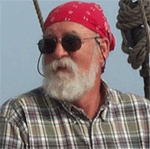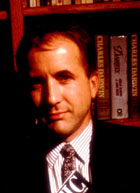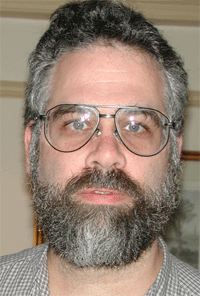"There are going to be things that meet those conditions that are not interestingly computational by anybody's standards, and there are things that are going to fail to meet the standards, which nevertheless you see are significantly like the things that you want to consider computational. So how do you deal with that? By ignoring it, by ignoring the issue of definition, that's my suggestion. Same as with life! You don't want to argue about whether viruses are alive or not; in some ways they're alive, in some ways they're not. Some processes are obviously computational. Others are obviously not computational. Where does the computational perspective illuminate? Well, that depends on who's looking at the illumination."

Introduction
A philosopher by training, Daniel C. Dennett is known as the leading proponent of the computational model of the mind. He has made significant contributions in fields as diverse as evolutionary theory, artificial intelligence, cognitive science, animal studies, computer science among others. Never one to avoid a good fight, he has clashed with such noted thinkers as John Searle, Roger Penrose, and Stephen Jay Gould. In this regard, Dennett is emblematic of the third culture intellectual.The strength of the third culture is precisely that it can tolerate disagreements about which ideas are to be taken seriously. There is no canon or accredited list of acceptable ideas. Unlike previous intellectual pursuits, the achievements of the third culture are not the marginal disputes of a quarrelsome mandarin class: they affect the lives of everybody on the planet.
"Dan Dennett is living proof that philosophy is not, as many think, airy speculation and effete musing.," notes Steven Pinker. "Time and again Dan has worked as a razor-sharp cognitive scientist, analyzing the implications of research more thoroughly than the researchers did themselves. His elucidation of different explanatory "stances" (physical, intentional, design) provided the key ideas behind mental modules (or multiple intelligences) for different domains of knowledge. His analyses of behaviorism, artificial intelligence, imagery, consciousness, free will, and evolutionary psychology just brim with insight and original ideas. And it doesn't seem fair that someone with such serious and important ideas should be so much fun to read!"
Marc D. Hauser credits Dennett (along with Jerry Fodor) as one of the two empirical philosophers — those who use data to drive philosophical discussion — that has hs had an extraordinary impact on evolutionary studies of the mind. Although these two often hold quite radically different positions, they have each contributed in important ways to our understanding of the mind, and how psychological findings bear on profound philosophical distinctions.
According to Hauser, "Dennett has had a significant impact on studies of animal cognition due in part to his work on the intentional stance and his intuitions about the kinds of inferences that humans and nonhuman animals might make with respect to other minds. When Dan laid out, in his typically lucid and playful fashion, how ethologists might go about studying intentionality from a Gricean perspective (I know that you know that I want that banana hidden from view from our fearless leader), this opened the door to a series of studies and analyses of animal behavior.
"Most crucially, Dan's insight into the problem of other minds, and of using studies of false belief to test for such mental states, set forth a cottage industry of research in animals and human infants. It is the combination of Dan's playfulness and creativity that makes him an asset to those of us working on animal cognition. One is almost tempted to say that in the same way that imaging provides a tool for understanding the neurobiological and functional architecture of the human mind, Dennett represents a tool for those of us studying animal minds."
— JB
DANIEL C. DENNETT is Distinguished Arts and Sciences Professor, Professor of Philosophy, and Director of the Center for Cognitive Studies at Tufts University. His first book, He is the author of Content and Consciousness; Brainstorms; Elbow Room;The Intentional Stance; Consciousness Explained; Darwin's Dangerous Idea; Kinds of Minds; and Brainchildren: A Collection of Essays. He co-edited The Mind's I with Douglas Hofstadter and he is the author of over a hundred scholarly articles on various aspects on the mind, published in journals ranging from Artificial Intelligence and Behavioral and Brain Sciences to Poetics Today and the Journal of Aesthetics and Art Criticism.
Daniel C. Dennett's Edge Bio Page
THE REALITY CLUB: Jaron Lanier responds to Dan Dannett




